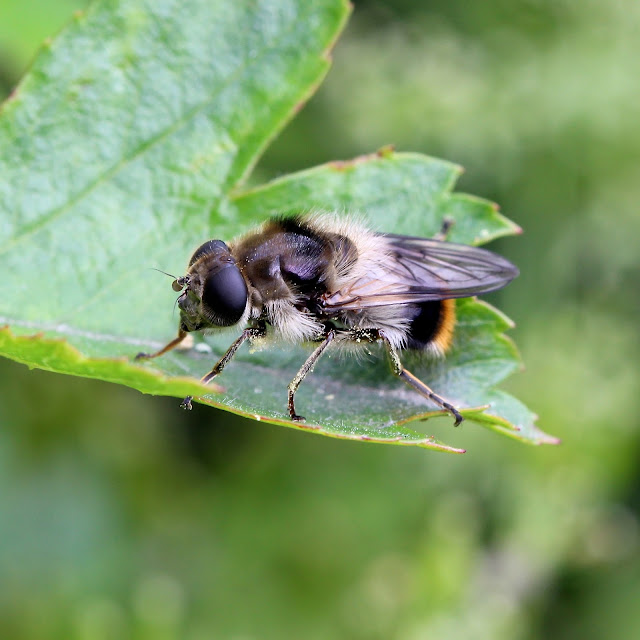This is Volucella bombylans var. bombylans.
And this is a red-tailed bumblebee worker.
This is Volucella bombylans var. plumata.
And this is a white-tailed bumblebee.
Another, less common hoverfly that mimics a bumblebee is Merodon equestris, the large narcissus fly. Its larvae develop in daffodil bulbs. The adult fly's colouring is quite variable - this male is perhaps a mimic of the common carder bee. He was defending a patch of flowers against all comers, chasing off any bumblebee that tried to land.
This is a common carder bee.
For a well illustrated guide to hoverflies that mimic bumblebees (in Ireland) click here.
30 June 2015 update. After posting the above yesterday I found this fly this morning at Banks' Pond. I think it is a female hoverfly with an unusual colour form and the unfortunate name of Volucella bombylans var. haemorrhoidalis, perhaps mimicking an early bumblebee (Bombus pratorum).
And here is a male Bombus pratorum.
































































